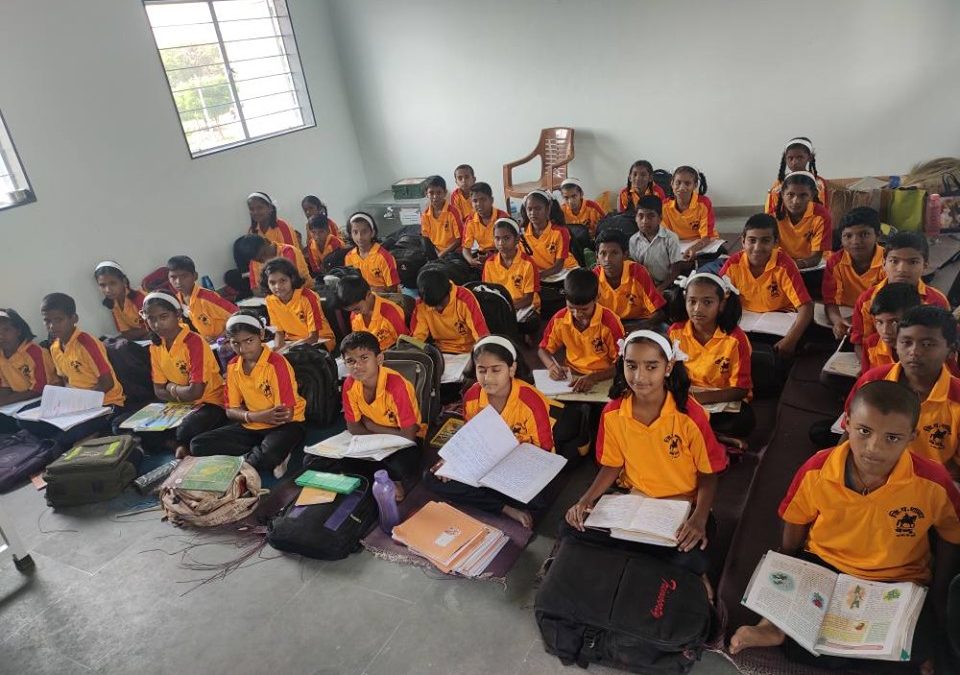
by NewsAdmin | Dec 4, 2019 | Jendamark Junction, Jendamark News
Determined to create a more conducive environment for learning, Jendamark India recently partnered with the new Zilla Parishade (District Council) School in Velu to fund the building of a classroom.
This newly built, government-run school serves 300 pupils, whose families hail from a mainly rural, agricultural community.
Jendamark India’s Pranjali Valavade says before its establishment, there were no district schools in the area.
“Education is essential for development and we really wanted to give something back to the community in which we are operating our business,” says Valavade, adding that one of these children could be the next tech leader.
“It is very important to have clean and spacious infrastructure for learning. We are so proud that we were able to give some small help in building a bright future for these children.”
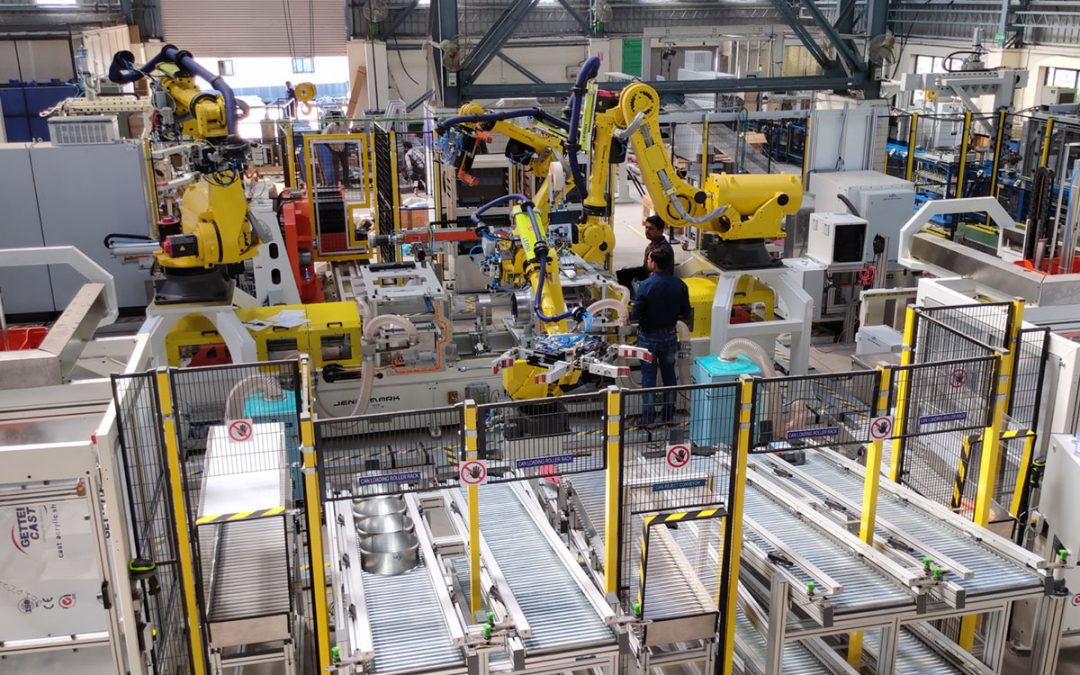
by NewsAdmin | Dec 4, 2019 | Jendamark Junction
With the BS-VI (Euro 6) emission standards deadline of April 2020 looming, Jendamark India has been hard at work, rolling out its first adaptive canning lines for customers.
SHARDA MOTOR INDUSTRIES
Sharda Motors was the first customer, ordering two identical canning lines for its facilities in Pune and Nashik, to cater to the varying needs of vehicle manufacturers Tata, Mahindra and Force Motors.
To accommodate each of Sharda’s end customers’ different requirements, 140 quick-changeover toolings were included in the design of the line.
After receiving the order in July 2018, Jendamark India set about the massively challenging task of designing, manufacturing and executing the country’s first adaptive canning line.
Counterpart Jendamark South Africa has been providing canning lines for over 10 years to several companies across the globe.
As Jendamark India’s key account manager Sayali Mahajan explains:
“This vast experience has allowed Jendamark India to use this expertise and to fine tune the machines to develop unique Indian solutions.”
With support from South Africa throughout this year-long project, Jendamark India developed standard machines and the two lines according to the customer’s specifications.
“In the end, we were proud to deliver a product that achieves the output volume, quality and cycle time requirements,” says Mahajan.
“Because adaptive canning is a relatively new concept, Jendamark also supported Sharda Motors in giving the customer a detailed understanding of adaptive canning in addition to product design recommendations.”
In-depth training on operating the line, preventative maintenance and quality product building was also provided in the initial phase, with future plans to integrate Jendamark’s own Industry 4.0-powered Odin tool management system into the line.
FAURECIA
In another first for the company, Jendamark India was asked to deliver its first fully automated adaptive canning line for Faurecia.
The most challenging aspect of this project was that two lines were ordered – one of which was built in India and the other in South Africa.
“But the customer’s condition was that they had to be absolutely identical,” says Jendamark India’s CEO Himanshu Jadhav.
Naturally, Jendamark’s two manufacturing facilities strove to reach the high bar that was set – and achieved success.
Jadhav says key to this success was sending members of Jendamark India’s design, assembly, controls and production management teams to South Africa, which was where Line 1 was built.
“The team gained hands-on experience and were able to transfer skills and knowledge on their return to India for building Line 2. Now we have developed our own resource pool of experts, who can successfully execute future projects.”
This project took nine months to complete and both lines were installed in the Faurecia facility in Chakan, where they will build products for end customer Cummins.
“More than meeting Faurecia’s request, this project also proved that Jendamark can deliver to a consistent global standard – wherever the line is manufactured,” says Jadhav.
“It was a steep learning curve working with our South African colleagues, with great cultural and knowledge exchanges between our teams.”
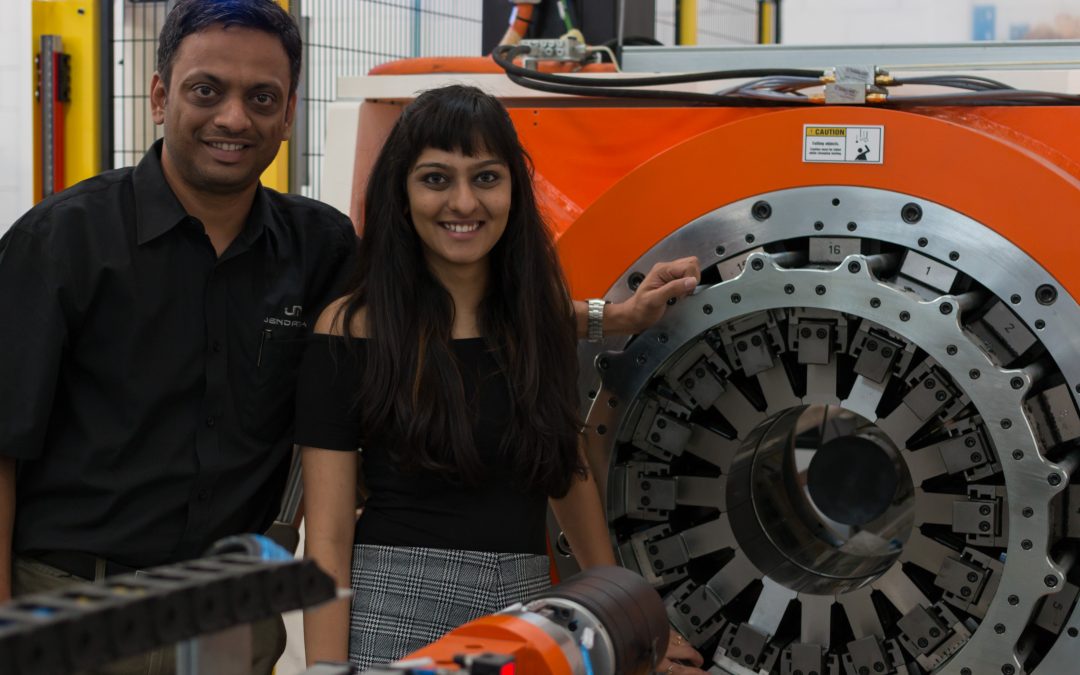
by Good News Lab | Aug 6, 2019 | Jendamark Junction
Part and parcel of Jendamark India’s programme to help the automotive industry achieve the desired Bharat Stage 6 emission norms are canning lines for Tier 1 suppliers like Sharda Motors, Faurecia, Cummins and Tenneco.
Essentially, the lines assemble the canning section of the catalytic converter, which is an emission reduction device incorporated into the exhaust system of a vehicle.It is made up of a coated monolith and intumescent mat inside a stainless steel can. The mat acts like a spring and, when compressed, exerts pressure to hold the monolith inside the can.
“In its simplest form, the device converts hydrocarbons, carbon monoxide and nitrogen oxides into water, carbon dioxide and nitrogen. Using catalysts like platinum, palladium and rhodium, it takes in harmful gases and puts out less harmful ones,” explains Jendamark India CEO Himanshu Jadhav.
Assembling the canning section of the converter requires a great deal of accuracy, which is why most of Jendamark’s canning lines are semi- to fully automated, incorporating a wide variety of robotic, electronic and mechanical components to reduce the risk of human error, says Jadhav.
CHANGING NORMS
“As anti-pollution efforts ramp up worldwide, the catalytic industry is now worth billions of dollars and growing at a rapid rate, with new technologies continuously being implemented.”
Naturally, he says, keeping up with the burgeoning industry presents a number of challenges. “Because of varying global emission norms, catalytic convertors have become larger and there are more irregular and non-round shapes than before,” Jadhav says.
“At the same time, the canning lines are required to turn out larger volumes, with shorter cycle times.”
MEETING CHALLENGES
To deal with the ever-present challenges, Jendamark developed standard machines that accommodate at least 90% of the odd-shaped parts, while the small margin that do not fall within the standard part range are handled by custom-designed machines.
“We design the lines according to the customer’s specifications and deliver a product that outputs the volumes and cycle times required,” Jadhav says. Another innovation born of necessity is the hybrid line, capable of producing pre-and post-sizing parts using common equipment.
“We have created a prototype division that is helping Tier 1 suppliers and original equipment manufacturers with part and process development, as well as manufacturing prototype parts for use in test vehicles.”
ADDING ADBLUE
In addition to the standard canning lines, Jendamark also produces complete catalytic converter assembly systems with AdBlue technology. As Jadhav explains, AdBlue is a reagent, comprised of a synthetic urea solution, that is injected into the exhaust gases of modern diesel-powered vehicles, which emit more smog-causing nitrogen oxides than petrol engines.
“With the assistance of the catalytic converter, AdBlue changes toxic exhaust gas into harmless nitrogen and steam for cleaner emissions. It’s an essential element in modern vehicles fitted with a Selective Catalytic Reduction (SCR) system, which helps to meet the levels required under the Bharat Stage Six and Euro Six norms.”
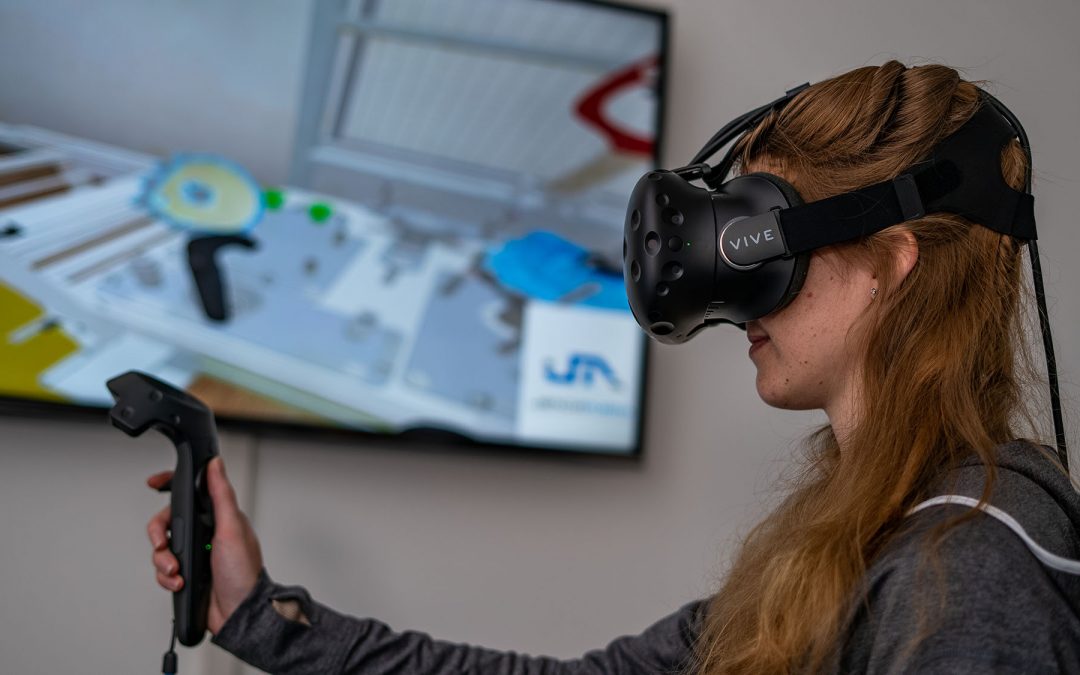
by Good News Lab | Nov 14, 2018 | Industry 4.0, Jendamark Junction
Jendamark’s virtual reality room allows designers and customers to explore the possibilities of a new production line in three-dimensional reality via an interactive, computergenerated experience.
The introduction of virtual reality (VR) has had tangible, real world benefits for Jendamark customers by enhancing the design review process.
First, the design team makes the complete production line in VR and a member dons the glasses for a walkthrough of the line. This simple step often highlights potential flaws that would not be apparent during a normal design review.
“It’s about seeing the design with fresh eyes,” says Yanesh Naidoo.
“For example, from a maintenance perspective, can the motor be easily replaced or is it stuck underneath in an unreachable back corner? And, as the operator, can one easily reach all the components, and does it really take the time predicted?”
Naidoo says VR is ideal for ironing out any kinks before the design is handed over to manufacturing and for clients to get a better understanding of its workings before sign-off.
“While the line is in production, VR could also be used to train teams of operators on the virtual version, so that they are ready to hit the ground running when commissioning is complete.”
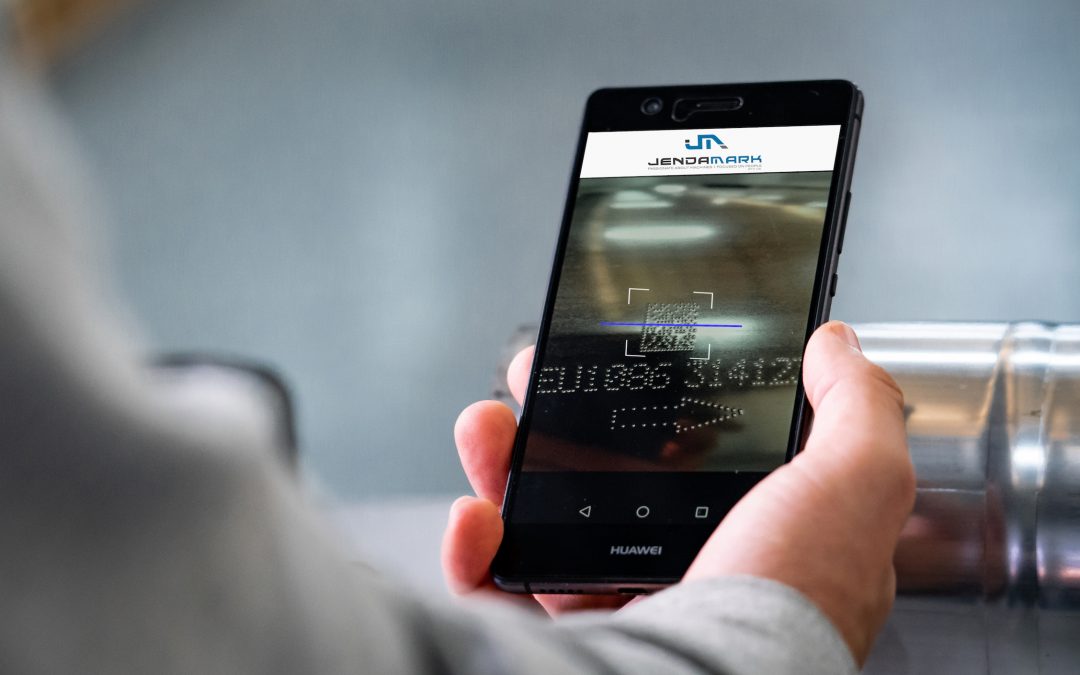
by Good News Lab | Nov 13, 2018 | Industry 4.0, Jendamark Junction
The Internet of Things (IoT) describes a network of machines, devices and other items that have built-in connectivity, electronics, software or sensors that allow them to share data and improve efficiency for humans interacting with them.
While the idea of a “smart home” or “smart business” may seem far in the future, current estimates suggest that there could be around 30 billion connected devices worldwide by 2020.
For Jendamark, the first application of IoT principles will soon be demonstrated with the addition of a documentation app* to its Odin software platform.
According to Yanesh Naidoo, it is standard practice for the company to deliver all the printed manuals and necessary documentation for a new machine or line as part of the handover process to a customer. Unfortunately, those documents are often misplaced over the years and remain unread until something goes wrong, he says.
“Our solution is to place a 2D matrix or QR code on the main sub-assembly of every machine we make. Then, instead of trying to find the manual, the maintenance technician simply scans the code using the app, which will take him to a link with the correct documentation for that particular sub-assembly.”
Taking this one step further, the IoT could be used to collect data such as the part numbers on a customer’s machine as well as the replacement parts available in his or her storeroom. This information would be available at a glance via the app, thus reducing machine downtime while fixing the problem.
* Currently in development. Available soon for Android devices from the Google Play store.
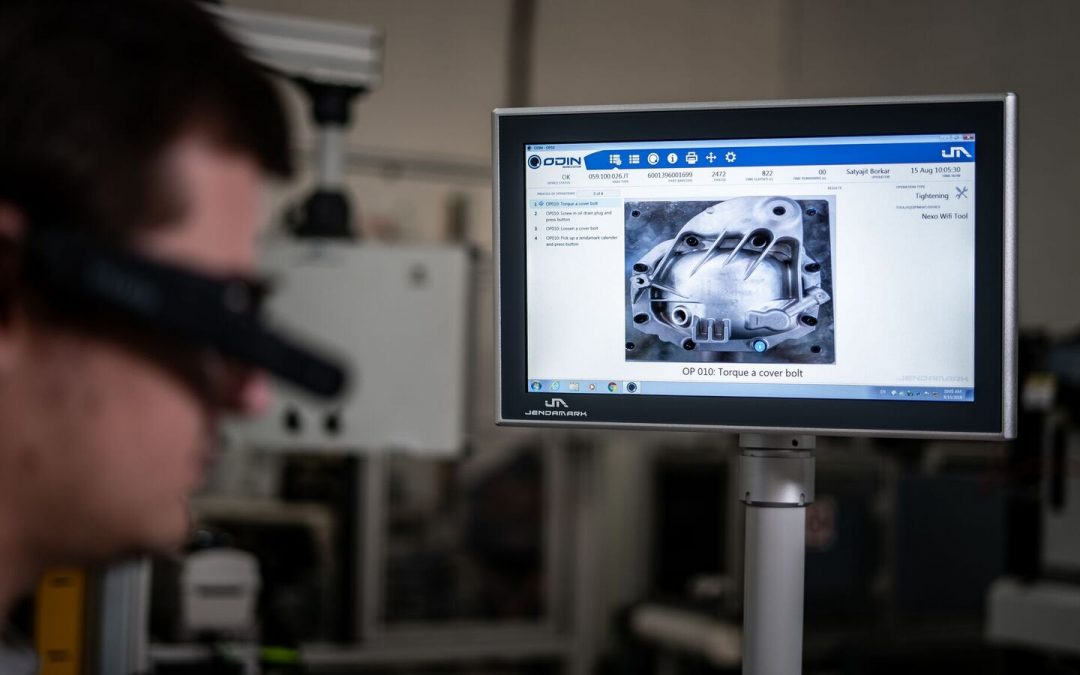
by Good News Lab | Nov 12, 2018 | Industry 4.0, Jendamark Junction
Augmented reality (AR), as the name suggests, uses technology to augment or add to a user’s experience by superimposing computer-generated images, text and sounds over a real-world environment.
AR creates an immersive and interactive experience for the user, which makes it particularly suitable for assisting operators and maintenance teams on production lines.
Jendamark currently uses AR hardware in the form of Vuzix smart glasses as a bolt-on to its WorkStation app to improve operator efficiency. Instead of consulting a screen or trying to remember each assembly process required, the operator sees the step-by-step process as a visual overlay on the real life workstation through the lens of the glasses.
AR also has a role in quality control by highlighting those parts that need to be visually inspected by the operator once assembled. Once everything is in order, the operator can capture the image, which may be logged as an element in the product traceability chain.
Aside from operator guidance, the glasses also help maintenance workers to access remote support more effectively. Once logged on to the software, the support provider – who may even be on the other side of the world – can see exactly what the maintenance worker sees.
This enables him to guide the on-site worker verbally through the repair process via Skype and by “drawing” helpful sketches, arrows and circles, which are superimposed on the maintenance person’s view of the problem area.
Jendamark’s aim is to develop the AR software that supports all of these functions and plugs seamlessly into its Odin software platform.





